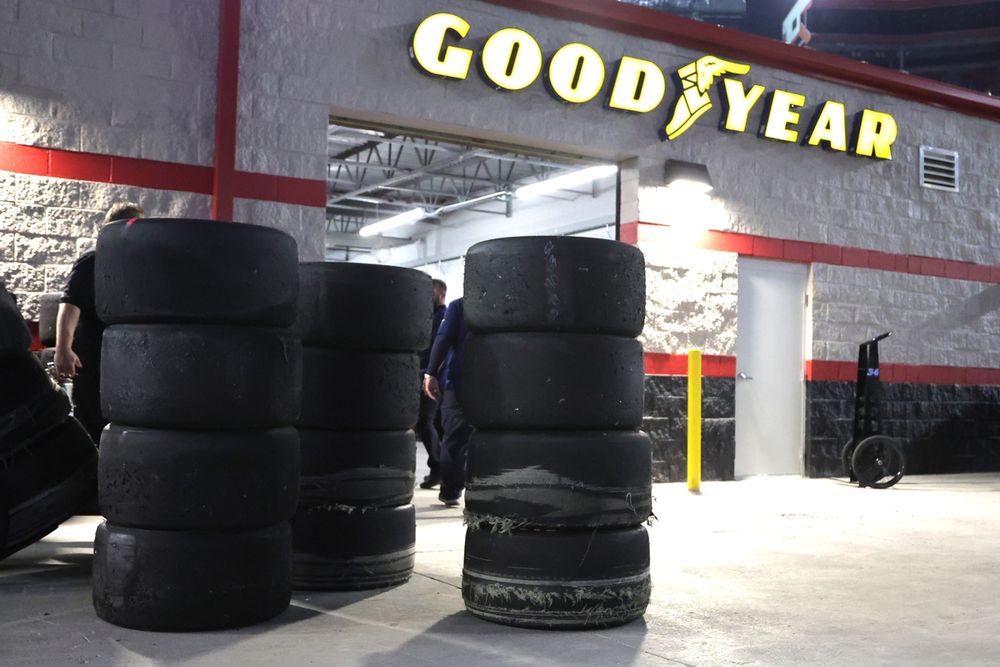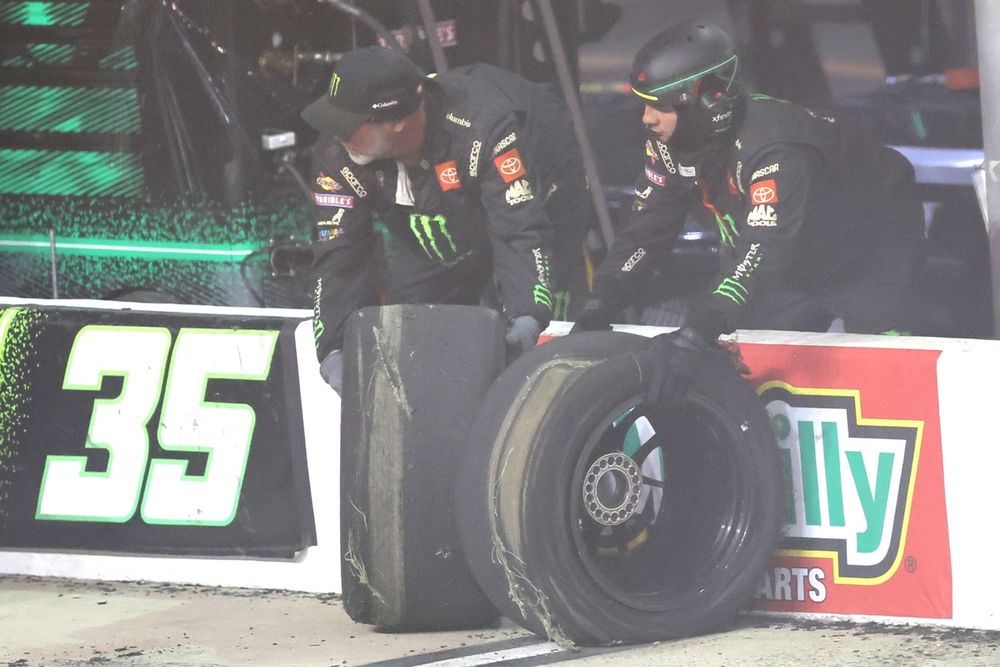
On SiriusXM NASCAR Radio’s ‘The Morning Drive’, Rudy Fugle, crew chief for the No. 24 Hendrick Motorsports Chevrolet and driver William Byron, offered his thoughts on the return of Bristol’s ‘chaos tire’ this past weekend.
Hitting the ‘magic track temperature,’ the Bristol Night Race produced 36 lead changes (compared to just four in the spring race), but also 14 cautions.
“We don’t know what we’re trying to achieve”
Photo by: Jared C. Tilton/Getty Images
Fugle gave an interesting perspective on Monday, noting that what we saw was more about tires shredding than actual tire degradation, and that it wasn’t a true return to ‘old-school’ Bristol racing. He also believes that the cooler temperatures had more of impact than the new right-side tire, claiming that the old tire may have reacted similarly in the same conditions.
“Whoever made that decision, I’m not in those conversations, but we were told that that was the plan,” said Fugle. “They wanted it to be that kind of a race. I don’t know that it’s 100% a Goodyear thing. If we were running the old right side tire, we were going to be within a couple degrees of that threshold on the tires wearing again or not, too. So I really think somebody has to put the goal on the wall. What do we want the Bristol race to be? And if you don’t know what that goal is, you know, (then) we don’t know what we’re trying to achieve.
“If anybody asks for my help, which sometimes they do or don’t, I don’t even know what the goal is. Are the fans wanting one of those two races, or are they wanting 1995? If they’re wanting 1995, it wasn’t either one of those races, in my opinion, either. I was sitting in a grandstand as an 11-year-old kid watching in 1995 and it wasn’t like either of those races. They were going all out. They were just on the bottom and bump-and-run with the thing and whatever. If you want 1995, it’s not going to come from a Goodyear tire. It’s going to come from cutting up the racetrack and redoing the concrete back to 1995 and then — I don’t even know if the car can produce that kind of racing either, but that’s the first step.”

Goodyear tires
Photo by: Jeff Robinson/Icon Sportswire via Getty Images
Bristol has undergone several changes since 2007, initially giving it progressive banking and making the top lane dominant. In attempt to go back, the track grounded down the top lane and as the track evolved, it became less and less like the Bristol that used to sell out years in advance. Series officials even put dirt on it at one point to try and reignite the spark.
Fugle talked about all of that, and as he already indicated, he just wants there to be a clear vision for the future of racing at Bristol — no matter what that may be.
“If that’s what we want (1995 Bristol), we got to put that on the wall and then say that’s what we’re trying to achieve,” said Fugle. “We’re not trying to achieve 40 laps and the tires shredding and a mess or whatever. Any of those things are fine. When we race, we line up and race. And every one of those types of races is challenging on the teams, the drivers, and we enjoy that challenge differently.
“You just kind of like to know what to expect … We don’t even know what the goal is, so once we determine what the goal is to make somebody happy, then we’ll try to go fight it, but I don’t even know what we’re trying to achieve.”
The drivers couldn’t do much to save tires

Goodyear tires in pits for Riley Herbst, 23XI Racing Toyota
Photo by: Jeff Robinson/Icon Sportswire via Getty Images
As he reflected on the race, Fugle said he realized what was happening around Lap 25. “Nobody was sure that it was going to happen, so, it was a surprise once we started seeing the marbles starting to collect up there on the outer groove. That was a telltale sign, probably around (Lap) 25, but I noticed that and told William and we started slowing down and trying to run the bottom.
And while tire conservation became critical to a successful night, Fugle claims there wasn’t much you could do from behind the wheel.
“You weren’t in control of it much, which was – that was my disappointment. And that’s the thing that made it compelling, but it was more tire shredding than tire degradation. You want to put the drivers in control and they weren’t as in control as you’d want them to be in a ‘tire saving race.’ That was the hard part. You couldn’t make a huge difference in how long you’d run.”
It was also difficult to plan the strategy, having to quickly adjust in the early running to ‘safe mode’ and begin adjusting the car for the updated situation. Another curveball was the amount of tires at their disposal. While Goodyear did eventually release an extra set, Fugle said there was about 100-150 laps when they weren’t sure if that was going to happen.
“It was really hard to plan, and use your tire sets any differently because there was the big if, and then I think (while) getting ready for Stage 3, we were told that they were gonna get released, and then our strategy was able to be a little bit more, clear cut because we knew we were going to have the extra set of tires.
“…It was pretty much tiptoeing the whole night.”
The unpredictable night didn’t go the No. 24’s way either, as Byron sustained nose damage mid-race and then got knocked into the wall on the final restart while inside the top ten, finishing 12th.
“It’s just the haymakers coming from everywhere,” said Fugle. “You didn’t even know where the punches were coming from. So, it was pretty tough.”
In this article
Be the first to know and subscribe for real-time news email updates on these topics

